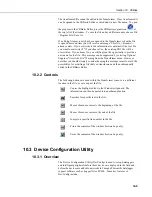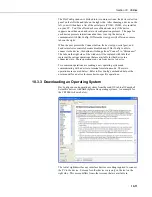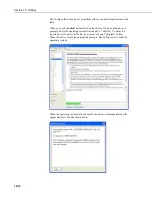
Section 10. Utilities
If an array ID is desired, select the
Include Array ID
check box and enter
a value into the field. The value can range from 1 to 1023. The array ID
will be the first value in the array of data.
Select the appropriate timestamp options for the type of timestamp to
write to the file. Each time element will be output as a separate data value
in the array and the data values will be separated by a comma. Selecting
Year
will output the year represented by four digits, YYYY (e.g., 2006).
The
Day
will be represented as a Julian Day. The
Hour/Minutes
will be
represented by four digits (hhmm). When
Midnight is 2400
is selected,
the timestamp will reflect midnight as the current date with 2400 for the
Hour/Minutes. Otherwise, the timestamp will reflect midnight as the next
day's date, with the Hours/Minutes as 0000.
The
Max and Min Timestamp Options
is used to determine the type of
timestamp that will be used for Maximum and Minimum outputs that
include a timestamp along with the value. You can choose to output No
Timestamp, a timestamp that includes Hours/Minutes/Seconds (produces
two values, hhmm and seconds), a timestamp that includes Hours/Minutes
only, or a timestamp that includes Seconds only.
CSIXML – Data is stored in XML format with Campbell Scientific
defined elements and attributes.
The file format is reflected in the default filename by the prefix of either
TOA5, TOB1, CSV, or CSIXML added to the table name.
10.1.2.2 File Processing
Use Filemarks -
CRBasic dataloggers have a FileMark instruction that allows
you to store a filemark along with the data. These filemarks are ignored by the
LoggerNet or PC400 data collection process. However, in CardConvert you
can convert the file with the
Use Filemarks
option selected, and the file will
be stored as multiple files, based upon the filemarks. Each file created will be
given a numeric suffix prior to the *.dat extension. The first file is stored with
a _1 at the end of the root file name (e.g., TOA5_Mytable_1.dat). The number
is incremented by one with each new file saved. If a file with the same name is
found, the number will be incremented to the next available number.
Use Removemarks -
When a compact flash card is removed from a CR1000
or CR3000 datalogger, a special mark is inserted in the last record. The
Removemark is similar in nature to the Filemark. In CardConvert, you can split
a file into multiple files, separated at the Removemarks, by converting the file
with the
Use Removemarks
option selected. As with the
Use Filemarks
option, the first file stored uses a _1 at the end of the root file name and the
number is incremented by one with each new file saved.
Use Filemarks
and
Use Removemarks
can be selected at the same time, to
create a new file from the data table any time either of the marks is
encountered.
Use Time
- This option is used to store the converted data into files based on
the timestamp of the data. When the
Use Time
check box is selected, the
Time
Settings
button becomes available. This button opens a dialog box that is used
to set a
Start Date
and
Time
, along with an
Interval
, which are used to
10-3
Summary of Contents for PC400
Page 2: ......
Page 16: ...Section 1 Introduction 1 6...
Page 18: ...Section 2 System Requirements 2 2...
Page 46: ...Section 4 The PC400 Main Screen 4 24...
Page 49: ...Section 5 Split 5 3...
Page 82: ...Section 5 Split 5 36...
Page 114: ...Section 6 View 6 14...
Page 132: ...Section 7 Short Cut Program Generator 7 18...
Page 188: ...Section 9 Datalogger Program Creation with CRBasic Editor 9 30...
Page 230: ...Appendix B Table Based Dataloggers B 12...
Page 249: ......
















































